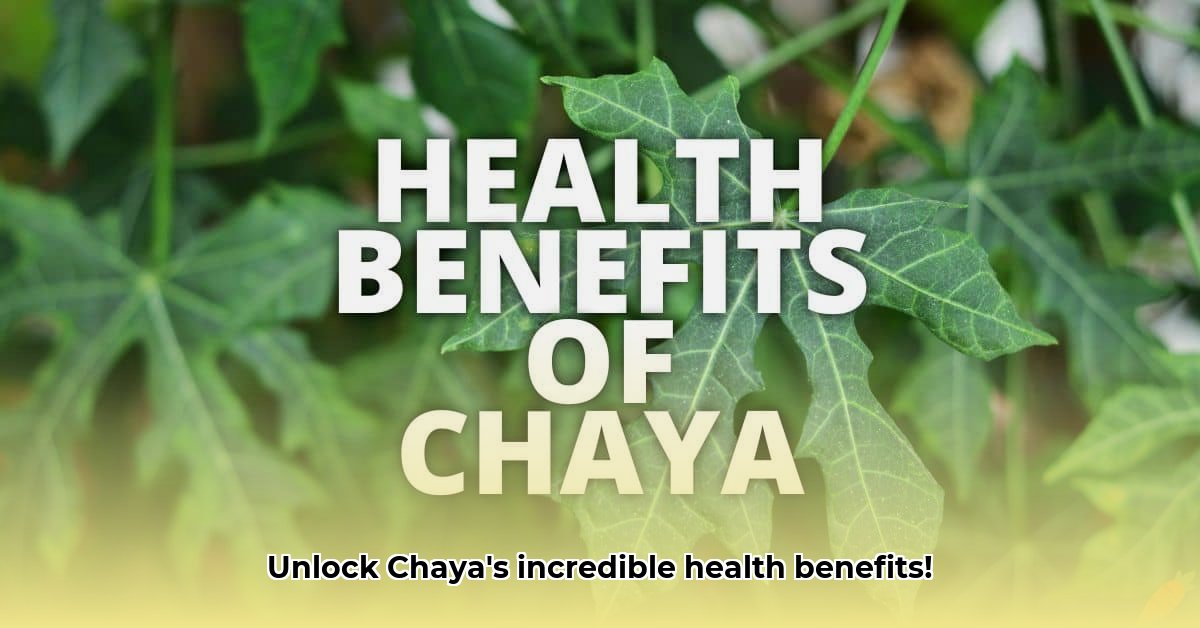
Cultivating Your Chaya Patch: A Step-by-Step Guide
Chaya ( Cnidoscolus aconitifolius), a nutrient-rich leafy green, offers significant potential for sustainable food production. However, safe preparation is crucial due to the presence of cyanogenic glycosides, which are neutralized through proper cooking. This guide provides a comprehensive approach to growing, harvesting, and preparing chaya safely.
Key Takeaways: Chaya's nutritional profile surpasses many common greens. Thorough cooking is essential to eliminate toxins. Sustainable cultivation practices are crucial for long-term benefits.
Getting Started: Planting and Soil Preparation
- Choose Your Location: Select a sunny spot with well-drained soil. Sandy loam is ideal. Avoid areas prone to waterlogging.
- Soil Enrichment: Amend the soil with compost to improve drainage and fertility. A rich soil promotes healthy growth and pest resistance.
- Propagation: Chaya is easily propagated from stem cuttings. Take 6-8 inch cuttings, remove lower leaves, and plant directly into the prepared soil. Space plants 2-3 feet apart.
- Watering: Water regularly, especially during establishment. Once mature, chaya is relatively drought-tolerant.
Chaya Care: Growth and Pest Management
- Watering: Maintain consistent moisture, but avoid overwatering, which can lead to root rot.
- Fertilization: While not strictly necessary, occasional compost tea or organic fertilizer can enhance growth.
- Pest Control: Promote a robust plant by focusing on soil health and avoiding overwatering. Natural pest predators will generally keep pest populations in check. Avoid chemical pesticides. Companion planting (intercropping with other species) can help deter some pests naturally.
Harvesting Your Chaya
- Timing: Harvest young, tender leaves regularly, leaving enough foliage for continued growth. Repeated harvesting is possible from the same plant, ensuring a sustainable yield.
- Method: Use sharp shears or pruning shears to cleanly cut leaves from the stem. Avoid pulling leaves, as this can damage the plant.
- Storage: Store fresh leaves in the refrigerator for up to 3 days or freeze for extended storage.
Did you know? A single chaya plant can yield several harvests per year, providing a continuous supply of this nutrient-rich vegetable.
Nutritional Powerhouse: Chaya's Impressive Profile
Chaya significantly surpasses many common leafy greens in several key nutrients. It is a rich source of Vitamin C, Vitamin A, calcium, and iron.
| Nutrient | Chaya (per 100g, approximate) | Spinach (per 100g) | Kale (per 100g) |
|---|---|---|---|
| Vitamin C (mg) | High | Moderate | Moderate |
| Vitamin A (µg) | High | Moderate | High |
| Calcium (mg) | High | Moderate | High |
| Iron (mg) | Moderate | Moderate | Moderate |
Note: Nutritional values can vary based on growing conditions and analytical methods.
Safe Preparation: Eliminating Toxins
Crucially, never consume raw chaya. It contains cyanogenic glycosides, which are toxic. Thorough cooking is ABSOLUTELY essential to eliminate these toxins.
Step-by-Step Cooking Instructions:
- Wash Thoroughly: Rinse leaves under running water to remove any dirt or debris.
- Boil: Submerge leaves in boiling water for at least 10 minutes. Longer boiling times (15-20 minutes) are recommended to ensure complete toxin neutralization.
- Drain Well: Discard the cooking water, as it will contain the toxins.
- Cook Further (Optional): After boiling, the chaya can be incorporated into soups, stews, or other dishes requiring additional cooking.
- Enjoy! Your chaya is now safe and ready to enjoy.
Beyond the Plate: Additional Uses of Chaya
Chaya's versatility extends beyond culinary uses. Its rapid growth and dense foliage make it an excellent choice for:
- Living Fences: Creating natural, sustainable barriers.
- Animal Feed: Supplementing livestock diets with its nutritional value.
- Soil Improvement: Incorporating chaya into crop rotation can enhance soil fertility.
Addressing Concerns and Future Research
While chaya presents remarkable potential, further research is needed to fully understand:
- Long-term health effects of regular consumption.
- Optimal cultivation practices for maximizing yield and nutritional value.
- The plant's potential for large-scale production and distribution.
Conclusion: Embracing Chaya Responsibly
The chaya plant offers a wealth of benefits, but responsible cultivation and preparation are paramount. By following these guidelines, you can safely enjoy this nutrient-rich crop and contribute to a more sustainable food system. Remember, always prioritize safe preparation to reap the rewards of this remarkable plant.